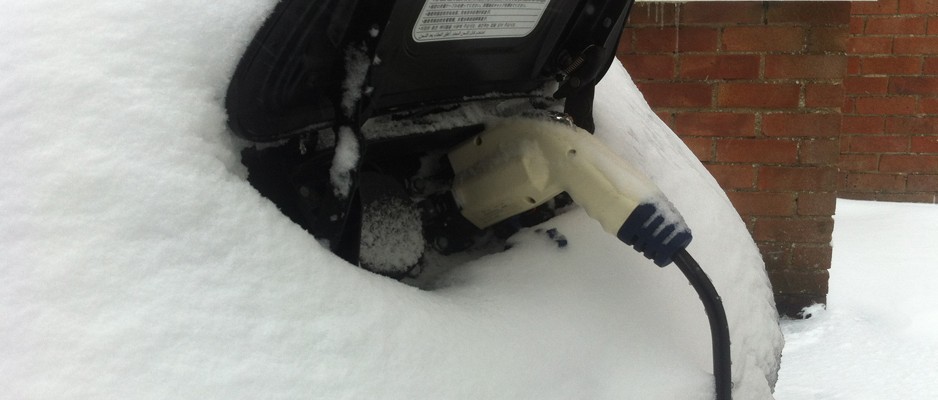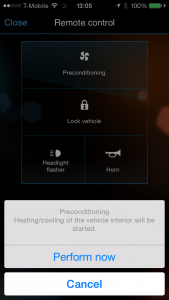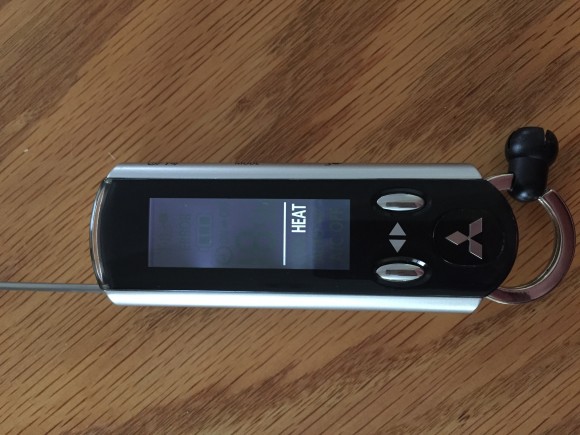Pre-Conditioning Explained

Saturday 3rd January 2015
What is pre-conditioning? This is the term used to describe the heating or cooling of your Electric Car interior before you need to leave your current abode.
There’s nothing nicer, when it is freezing outside, than getting into a lovely warm car. We all like it but, if you own a petrol car you cannot do this. Well, you can but you shouldn’t as you are then idling, which is, in most US states illegal – although not enforced enough. You are also creating even more pollutants in an idling vehicle than one that is being driven. To overcome the cold and the slow engine speed, a petrol car has to use even more fuel than normal to keep itself going. And, do you know who suffers the most from idling vehicles? Children do! They stand closer to the tailpipe height than adults and breathe faster than adults. An idling vehicle has higher pollutants inside the vehicle too – Yuk!!

When you are pre-conditioning your EV, you can leave the garage door closed as there are no stinky fumes to stink out your garage which is an added bonus especially if you have a garage that is attached to your house. There is no worry about adding to the rise in incidents of asthma in children – yes, it is happening. You are also not damaging your cars engine as EV’s don’t have one!
You checked the weather forecast before you went to bed last night and saw that it was going to be freezing outside the next morning, you knew your EV would be cold and so will the batteries. So to have a nice warm EV ready for your departure you can either program your EV to start warming up from the settings on the car, the app on your smartphone, or the remote key fob. Some EV’s will warm their batteries first before heating the cabin, yet another benefit as warmer batteries hold more electrons and therefore you get better range. Pre-conditioning while still connected to the mains power is beneficial and results in more range as you are not using the batteries to warm the car which does eat into your range. Some EV’s can be toasty and warm to go in 15 minutes, others can take longer, depending on whether and how much they heat the batteries first. In the ActiveE, the car would heat the batteries to 20°C (68°F) first then start heating the cabin – this took around an hour in total.

Over to my Chief Science/Technology Officer for the science behind pre-conditioning.
How can pre-warming your car be more environmentally sound than not?
To answer that, we need to look at the numbers very closely.
Let’s assume that you are going to drive in a warm car. Warming the car takes energy. Let’s assume, for example, that it takes an average car 15 minutes to warm up with its 5kW heater built in. The power used to warm up is 5kW for ¼ hr or 1.25kWh of electricity. Once the car is warmed through, the heater cuts down power to 500W or less depending upon the outside temperature. That 15 mins of driving uses 500W x ¼hr or 0.125kWh of electricity but, wait, the power used whilst we’re driving is coming off of the main battery and that’s not 100% efficient! Let’s assume 85% efficiency for charging and discharging. That means that last 15 mins of driving with the heater on actually used an extra 15% or about 0.143kWh for a total power consumption, after 15 mins of driving of 1.393kWh. That’s about $0.21 and about 1.3lb of CO2 here in New Jersey. Let’s compare that to jumping in and driving away with the heat on. That’s 15 minutes of chilly car warming up at the full 5kW and, from the less than 100% efficient batteries. So, that’s 5kW x ¼ + 15% or, 1.44kWh and that’s about $0.22 but more importantly, it’s now 1.46lb of CO2.
There are always variables, if the battery is 95% efficient it’s a wash, if the battery is charged during off-peak base-load and preconditioned on higher polluting mid-day power, it’s a wash but, it’s seldom better to heat on battery and you’ll always loose the extra miles.
In the summer we can do the reverse and cool the car the same way.
Being able to pre-condition is just one of the many great features about Electric Cars.


Comments